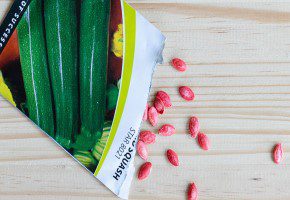- Bypass the Crash & Claim Victory – Is the Chicken Road gambling game a Legit Path to £20,000 Winnings with 98% RTP?
- Understanding the Core Mechanics of Chicken Road
- Difficulty Levels: Tailoring Risk to Your Preference
- Betting Range and Maximum Payouts
- Strategies for Success in Chicken Road
- The Importance of Responsible Gambling
- Analyzing the Return to Player (RTP) of Chicken Road
Bypass the Crash & Claim Victory – Is the Chicken Road gambling game a Legit Path to £20,000 Winnings with 98% RTP?
The world of online casino games is constantly evolving, with new and innovative titles emerging regularly. Among these, crash games have gained significant popularity, offering a unique blend of simplicity and excitement. One such game garnering attention is the ‘Chicken Road’ game, a visually appealing and potentially lucrative option for players. But is the chicken road game legit, and can players realistically achieve substantial winnings? This article will delve into the mechanics, strategies, risks, and rewards associated with this increasingly popular crash game, exploring whether it offers a genuine path to potentially significant financial gains, boasting a reported 98% Return to Player (RTP).
This game distinguishes itself with its charming aesthetic – a chicken navigating a road filled with obstacles. However, beneath the playful exterior lies a game of skill and risk management. Players must decide when to cash out before the chicken meets an unfortunate end, determining their multiplier and eventual payout. Understanding these nuances is crucial for anyone considering giving ‘Chicken Road’ a try.
Understanding the Core Mechanics of Chicken Road
At its heart, Chicken Road is based on a simple premise: a multiplier steadily increases as a chicken progresses along a series of lines. Players place a bet before each round and can cash out at any time to secure their winnings, multiplied by the current value. However, the game ends abruptly if the chicken crashes – encounters an obstacle – resulting in the loss of the entire bet. This “crash” element introduces a significant element of unpredictability and risk. The game’s RTP is advertised as 98%, which, if accurate, suggests a relatively favorable return for players over the long term, though individual results will undoubtedly vary. This isn’t a guarantee of profit, but a long-term statistical advantage.
The visual presentation of the game, featuring a cheerful chicken, should not mislead players into underestimating the inherent risks. Experienced players will recognize the underlying mechanics as similar to other popular crash games, just with a unique theme. Like its counterparts, Chicken Road banks on the psychological element of when to cash out, as the temptation of a larger multiplier can lead to a devastating loss.
To further illustrate the mechanics, consider this: the longer you wait to cash out, the larger your potential win, but the closer you get to a potential loss. Responsible gameplay and a well-defined strategy are paramount to success.
| Easy | 25 | 1/25 |
| Medium | 22 | 3/25 |
| Hard | 20 | 5/25 |
| Hardcore | 15 | 10/25 |
Difficulty Levels: Tailoring Risk to Your Preference
Chicken Road isn’t a one-size-fits-all experience; it caters to different risk tolerances through its four difficulty levels: Easy, Medium, Hard, and Hardcore. Each level alters the number of lines the chicken traverses and, critically, the risk factor. Easy mode presents the chicken with 25 lines, significantly reducing the odds of an immediate crash, but also capping the potential multiplier. Hardcore mode, conversely, features only 15 lines, meaning a higher crash probability but proportionally larger potential payouts. Choosing the appropriate difficulty level is a fundamental aspect of navigating the game effectively.
The risk factor, expressed as a fraction, represents the probability of the chicken crashing. For example, a 1/25 risk factor in Easy mode indicates that the chicken has a 96% chance of completing all its lines. Conversely, the 10/25 risk in Hardcore mode signifies a 60% chance of a crash. These numbers provide players with a quantifiable measure of risk, aiding them in constructing strategic gameplay.
The choice of difficulty level dictates the overall experience. Beginners may opt for Easy or Medium to gain familiarity with the game’s mechanics and build confidence, whereas experienced players might gravitate towards Hard or Hardcore, seeking higher potential rewards even with increased volatility.
Betting Range and Maximum Payouts
The accessibility of Chicken Road extends to its betting range, which accommodates both casual players and high rollers. Players can wager between £0.01 and £200 per round, making it suitable for various bankrolls. While the lower limit allows for prolonged gameplay with minimal risk, the £200 maximum bet enables the possibility of substantial payouts. However, responsible gambling practices should always be a priority, regardless of the bet size.
The maximum payout potential is capped at £20,000. This impressive figure is attainable only on the Hard and Hardcore difficulty levels, specifically when achieving a 100x multiplier. This highlights the higher reward potential associated with increased risk. Players aiming for the maximum payout must be prepared to accept a significantly higher probability of losing their initial stake.
Understanding the relationship between bet size, difficulty level, and potential payout is critical. A larger bet on a higher difficulty level amplifies both the potential gains and the losses, requiring careful consideration and robust risk management.
Strategies for Success in Chicken Road
While Chicken Road incorporates an element of chance, employing strategic approaches can significantly enhance a player’s odds of success. A common strategy is the ‘auto-cashout’ feature, allowing players to pre-set a multiplier at which their bet is automatically cashed out. This eliminates emotional decision-making and ensures a consistent profit margin. Another tactic involves starting with smaller bets to test the game’s volatility and gradually increasing them as confidence grows.
The Martingale strategy, increasing the bet after each loss, is also employed by some players but carries a high risk of depleting their bankroll quickly. Conversely, the Anti-Martingale strategy – increasing the bet after each win – minimizes losses and maximizes gains during winning streaks. Successful implementation of these strategies requires discipline, bankroll management, and a thorough understanding of probability.
Players should also be mindful of the game’s statistics and adjust their strategies accordingly. Consistently monitoring the crash patterns can provide insights into the game’s volatility, helping players identify optimal moments for cashout.
- Set a clear budget before you begin playing.
- Utilize the auto-cashout feature to avoid impulsive decisions.
- Start with small bets and gradually increase them as you gain experience.
- Understand the risk factors associated with each difficulty level.
- Don’t chase losses; accept that setbacks are part of the game.
The Importance of Responsible Gambling
Before diving into the world of Chicken Road, or any online casino game for that matter, it’s imperative to prioritize responsible gambling. This includes setting realistic expectations, understanding the inherent risks, and never wagering more than you can afford to lose. Online gambling should be viewed as a form of entertainment, not a source of income.
Recognizing the signs of problem gambling is also crucial. These signs include spending increasing amounts of time and money on gambling, chasing losses, lying to others about gambling habits, and experiencing feelings of guilt or regret. If you or someone you know is struggling with problem gambling, seek help from organizations dedicated to providing support and resources.
Remember, the chicken road game legitimately offers a chance to win, but it also carries a significant risk of loss. Approach the game with caution, discipline, and a commitment to responsible gambling practices.
- Set a strict budget and stick to it.
- Understand the game’s rules and volatility.
- Utilize responsible gambling tools provided by the platform.
- Avoid chasing losses.
- Take regular breaks.
Analyzing the Return to Player (RTP) of Chicken Road
The advertised RTP of 98% is a key factor in assessing the fairness and potential profitability of Chicken Road. RTP stands for “Return to Player” and represents the percentage of all wagered money that a game is statistically expected to pay back to players over an extended period of time. A 98% RTP is considered exceptionally high compared to many other casino games, suggesting a more favorable return for players.
However, it’s crucial to understand that RTP is a theoretical value calculated over millions of rounds. In the short term, individual results can deviate significantly from the average. A player may experience a streak of losses despite the game’s high RTP. This underscores the importance of responsible bankroll management and understanding the inherent volatility of crash games. The mathematical advantage, that 98%, doesn’t guarantee immediate or consistent wins.
RTP should be viewed as an indicator of long-term fairness, not a guarantee of short-term profits. Players should not base their wagering decisions solely on the RTP, but rather on a comprehensive understanding of the game’s mechanics, risk factors, and their own risk tolerance.
| Difficulty Levels | Easy, Medium, Hard, Hardcore | Adjusts risk and potential payout |
| Auto-Cashout | Pre-set a multiplier for automatic cashout | Removes emotional decision-making |
| Betting Range | £0.01 – £200 per round | Accommodates various bankrolls |
| Maximum Payout | £20,000 | Provides a high potential reward |




 Round Rugs
Round Rugs  Wool Rugs
Wool Rugs  Vintage Rugs
Vintage Rugs 


 Carpet Tiles
Carpet Tiles  Carpet
Carpet 
 Embossed Rug
Embossed Rug  Plain Rug
Plain Rug 
 2.5'*4'
2.5'*4'  2'*3'
2'*3'  3'*5'
3'*5'  5*7.5
5*7.5 













 Artificial Grass
Artificial Grass  Mats
Mats 
 Soil
Soil  Fertilizer
Fertilizer  Pesticides
Pesticides